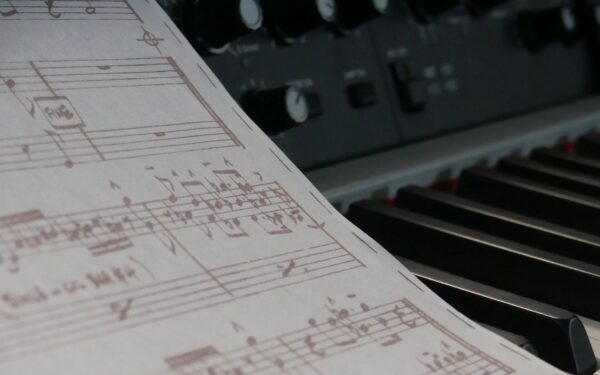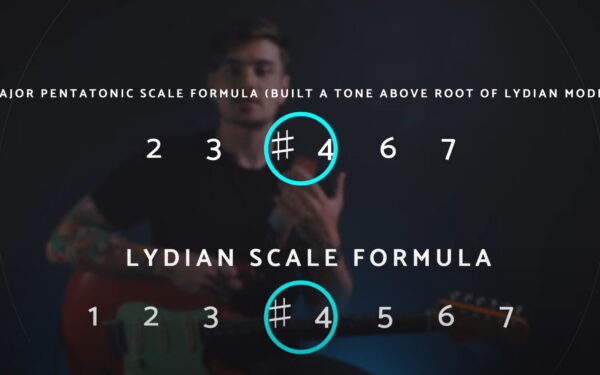How To Remember Scales On The Guitar Neck, With Fingering Patterns And Cycles
There are many ways to learn and remember scales on the guitar. The method I used before switching to absolute notes on the fretboard (like on the piano) is based on patterns and cycles. I find it pretty easy to remember, and it worked pretty well for me to get started quickly.
Prerequisites
Scales, guitar basics.
Main Principle
Instead of remembering all positions of a scale on the neck (pretty boring and fastidious), this method consists in remembering the cycle of patterns that you play on each string of the guitar so that whatever the position, you are able to predict the next pattern to play on the next string.
The only drawback of this method is that you have sometimes to move from your position (your first finger won’t strictly stay on the same fret), but the great thing is that you just have to remember one cycle of patterns (as if you just had to remember only one position per scale).
In this article we will only develop the method for the major scale and then just give the cycle of pattern for other scales.
Major Scale Pattern
Playing 3 notes per string, the major scale cycle is formed with only 3 different basic patterns.
First pattern, repeated 3 times:
Second pattern, repeated twice:
Third pattern, repeated twice:
And then back to first pattern… This is a cycle.
This produces the following sequence on a virtual neck with seven strings (The full cycle is seven patterns, which is logical since there are 7 notes in the scale, we play 3 notes per string, and 3 and 7’s smallest multiple is 3×7=21 notes per cycle):
We consider above a virtual neck with seven strings tuned with 4ths. This way you can remember easily the patterns and the way they follow each other independently from the major third interval between the G string and the B string.
On a real guitar neck, starting with the tonic on the first string (one pattern will be missing since we have only 6 strings), given the fact that the interval between the G string and the B string is a major third instead of a forth, so that you move your pattern one fret on the right:
Thinking this way it is very easy to remember your scale on the neck: whatever the position and the string, you just need to know where you are in the cycle and then the rest will come naturally under your fingers…
Minor scale
The patterns are the same as for the major scale since the notes are the same. The only change is the location of the tonic:
On a guitar neck:
And this actually works for all 7 modes of the major scale (lydian, ionian, myxolydian, dorian, aeolian-minor, phrygian, locrian). It’s just a matter of knowing where to place the tonic, but the patterns and their cycles all remain the same.
Minor Harmonic Scale
There are two approaches for this one. You can either think with the major scale pattern and remember that the note just before the tonic is closer (half a tone instead of a whole tone), or you can learn the patterns cycle. In this case there are four patterns and the cycle is a bit more complicated, so it’s getting more difficult to remember with this method:
On a guitar neck:
Pentatonic Scale
The pentatonic is very easy to remember as you have only 5 notes and 2 patterns. As you play two notes per string, the cycle is 5 patterns only. The only thing to remember is that next cycle will take place one fret on the left (see last pattern):
On a guitar neck:
Whole Tone Scale
The easiest way to play this scale is to use the cycle built with two patterns on one position:
As you can see, the method works best for scales that have simple patterns. For the harmonic and melodic minor scales, it gets a bit more complicated. Also, if you want to switch to another scale or mode in the middle of a song or solo, the relative pattern-based approach does not work very well.
That’s why I ended up switching to an absolute approach a few years later, “simply” remembering the alterations for each scale and where each note is on the fretboard. But it takes a bit of time to get there, and this cycle-based approach worked better for me than methods where you have to learn all positions of a scale.










One thought on “How To Remember Scales On The Guitar Neck, With Fingering Patterns And Cycles”